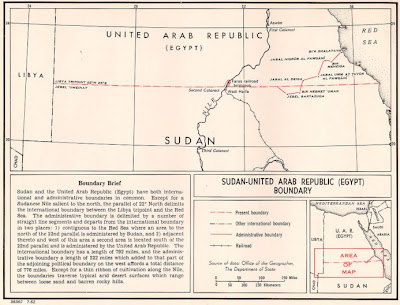
This map shows a strip of desert between Sudan and Egypt called the Bir Tawil Triangle. The Bir Tawil Triangle is significant because it is the only land on earth that is unclaimed by any country.
A collection of maps made in Geography 390






I didn’t make any changes to this map. I really didn’t have time. After losing my only copies of all these files and having to redo each map from scratch it was a big struggle just to finish the other maps. I think this map is pretty good, but if I were to make any changes I would probably move the scale bar above the legend and put a white halo around the title so it is easier to read.



 This map is no cartographic masterpeice, but it tells an interesting story. It matches US states with a country with the most similar GDP. The data from this map is a few years old (2007), but it really puts the size of the US economy into perspective. For instance, Bangladesh has a similar GDP to New Hampshire despite the fact that it has about 120 times more people.
This map is no cartographic masterpeice, but it tells an interesting story. It matches US states with a country with the most similar GDP. The data from this map is a few years old (2007), but it really puts the size of the US economy into perspective. For instance, Bangladesh has a similar GDP to New Hampshire despite the fact that it has about 120 times more people.